Turning a Page, Germans Try Celebrating Their Recent Veterans

© Lena Mucha for The New York Times

© Lena Mucha for The New York Times

German Defense Minister Boris Pistorius said Europe must begin preparing for a gradual reduction in U.S. military support for both the continent and Ukraine, Tagesschau reported on June 13.
"Yes, that's right. That would be so, and we have to deal with that," Pistorius told journalists in response to a question about the U.S. potentially scaling down its support. He noted that the discussions focus on a reduction in U.S. backing rather than a full halt.
The comments come after U.S. Defense Secretary Pete Hegseth announced that Washington would reduce the assistance allocated to Ukraine in the next year's federal budget.
"We now have to look at how much support drops and whether Europeans can compensate for it," Pistorius added.
While the U.S. has been Ukraine's leading military backer under former President Joe Biden, the Trump administration has yet to approve any aid packages and has become increasingly disengaged from peace talks.
Pistorius's comments come amid increasing uncertainty in transatlantic relations. U.S. Ambassador to NATO Matthew Whitaker confirmed on May 16 that the United States plans to begin discussions with European allies later this year about reducing its military presence on the continent.
Speaking at a security conference in Estonia, Whitaker said the talks would begin after the NATO summit in The Hague in June.
"Nothing has been determined," Whitaker said, according to Reuters. "But as soon as we do, we are going to have these conversations in the structure of NATO."
Whitaker emphasized that any drawdown would be closely coordinated to avoid creating security gaps. Still, he reiterated U.S. President Donald Trump's position that long-standing U.S. efforts to reduce its European military footprint must now be implemented.
"This is going to be orderly, but we are not going to have any more patience for foot-dragging in this situation," he said.
In February, Hegseth reportedly told NATO allies that "stark strategic realities" prevent the United States from being primarily focused on Europe's security. Leaks reported by the Atlantic in March revealed that both Hegseth and Vice President JD Vance privately criticized European defense spending, with Hegseth allegedly expressing his "loathing of European free-loading."
Trump called on NATO member states to increase defense spending up to 5% of GDP. Ahead of the upcoming NATO summit in The Hague on June 24–25, U.S. Secretary of State Marco Rubio said that member states will have agreed to a new goal of increasing defense spending.
"We are headed for a summit in six weeks in which virtually every member of NATO will be at or above 2%, but more importantly, many of them will be over 4%, and all will have agreed on a goal of reaching 5% over the next decade," Rubio told Fox News on May 15.
Such a move would mark a historic shift, with NATO partners collectively accounting for more than half of the alliance's military capacity, according to Rubio.
Since the beginning of Russia's full-scale war against Ukraine in 2022, NATO members have significantly increased their defense spending, with countries like Poland and the Baltic nations aiming to reach the 5% target in the coming years.
 The Kyiv IndependentKateryna Hodunova
The Kyiv IndependentKateryna Hodunova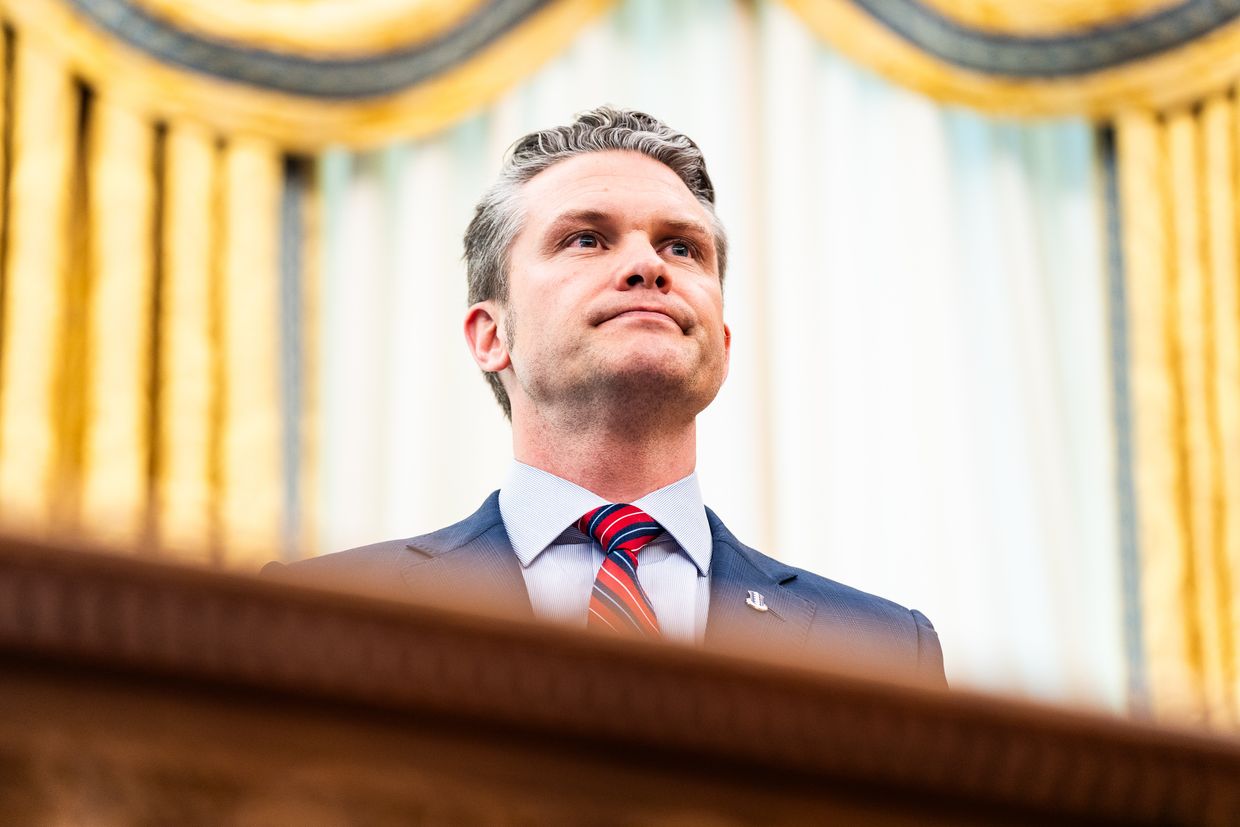
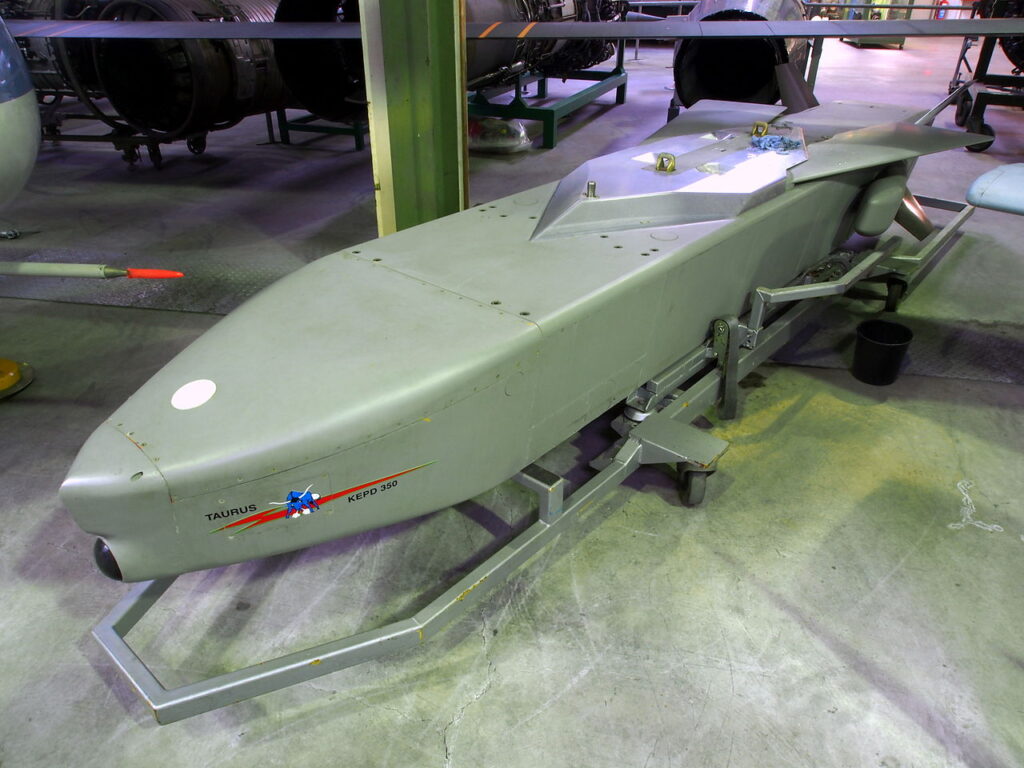
Germany will not supply Ukraine with long-range Taurus cruise missiles, Defense Minister Boris Pistorius confirmed during a visit to Kyiv on 12 June.
Speaking at a joint briefing with Ukrainian President Volodymyr Zelenskyy, Pistorius gave a direct response when asked about potential missile deliveries amid intensifying Russian attacks on Ukraine.
“You asked me whether we are considering this, I answer you — no,” Pistorius stated.
Former Chancellor Olaf Scholz categorically opposed providing the cruise missiles to Ukraine, arguing that such transfers risked drawing Germany directly into the Russian-Ukrainian war. In late 2024, Scholz said that “a German missile that can reach Moscow” and this would carry unacceptable risks.
Merz, by contrast, supported supplying these weapons systems to Ukraine even before assuming the chancellorship. He defended his position claiming that this step would significantly enhance Ukraine’s ability to strike Russian military targets and supply lines up to 500 km (310 miles) away, helping it defend against Russia’s unlawful aggression.
Pistorius also stated that Germany plans to allocate €9 billion in military aid to Ukraine for 2025, with portions of this funding designated for long-range weapons production.
“Supporting Ukraine is the task of all European peoples. We must take responsibility and recognize that this is not only Ukraine’s defense. Ukraine is fighting this war to ensure peace in Europe, so helping is our common task,” Pistorius stated.
Pistorius emphasized the effectiveness of Ukrainian drone technology and the technological expertise Ukraine has developed during its defense against Russian aggression.
“We all must learn from this. And I think that in the industrial sector we must also develop. Therefore, it’s about joint ventures that we want to build. We want more of these joint ventures both in Germany and in Ukraine in order to produce weapons faster for the common good and thus strengthen deterrence potential and defense potential,” he explained.
Zelenskyy and Pistorius discussed localizing air defense system production in Ukraine and agreed on additional investments in defense manufacturing. The leaders committed to expanding joint weapons production in both countries.

Editor's note: This story has been updated to include Germany's announcement to supply Ukraine with $2.2 billion in additional military aid.
Germany will deliver new IRIS-T air defense systems to Ukraine under a three-year supply plan, President Volodymyr Zelensky said during a joint press conference with German Defense Minister Boris Pistorius, who added Berlin has no plans to provide Taurus long-range missiles.
The announcement comes amid escalating Russian aerial assaults, including a June 10 missile and drone strike on Kyiv, one of the largest since the start of the full-scale invasion.
"We are grateful for the supply of IRIS-T air defense systems," Zelensky said on June 12. "We understand that deliveries are currently being planned... for the next three years. This is very important assistance."
The IRIS-T is a German-made medium-range surface-to-air missile system capable of intercepting drones, aircraft, and cruise missiles.
Pistorius confirmed the delivery timeline but firmly ruled out the possibility of sending Taurus missiles — weapons Kyiv has repeatedly requested to strike deep into Russian territory.
"You asked me whether we are considering this, and my answer is no," Pistorius said.
Before taking office, German Chancellor Friedrich Merz signaled openness to lifting former Chancellor Olaf Scholz's ban on the missiles. That stance has not yet resulted in a policy shift.
Ukraine has already received long-range missiles — including ATACMS from the U.S. and Storm Shadow and SCALP from the U.K. and France. Initially restricted to use within Ukrainian territory, Western allies only began easing those limitations in late 2024.
Germany is Ukraine's largest military donor in Europe. Pistorius said that Berlin will provide 9 billion euros ($10.4 billion) in aid this year, with investments in defense production being considered. The total includes an additional commitment in military aid worth 1.9 billion euros ($2.2 billion).
"Today, we discussed that this aid will continue," he said. "We agreed on additional investments in production... both in Ukraine and in Germany."
Zelensky visited Berlin on May 28 for talks with Merz, part of an ongoing effort to bolster Ukraine's defense industry amid uncertainty over U.S. support under President Donald Trump.
 The Kyiv IndependentKollen Post
The Kyiv IndependentKollen Post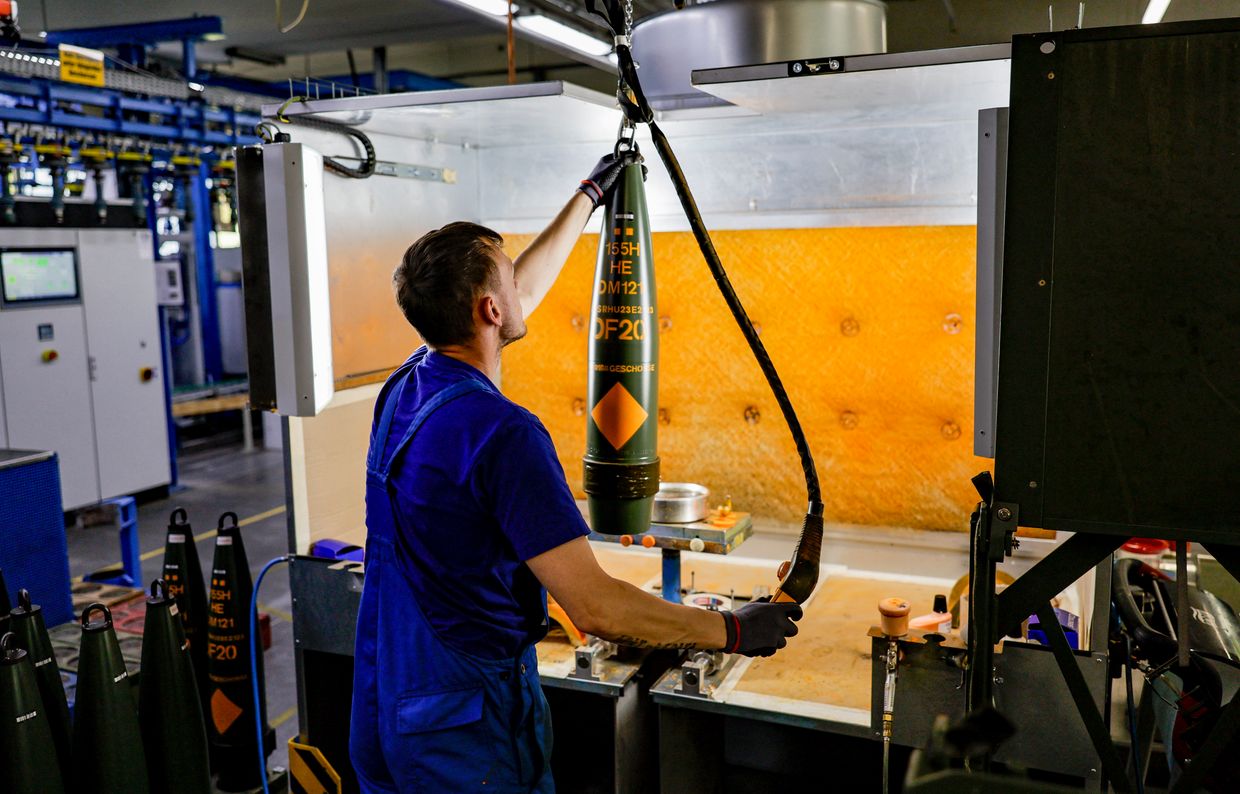
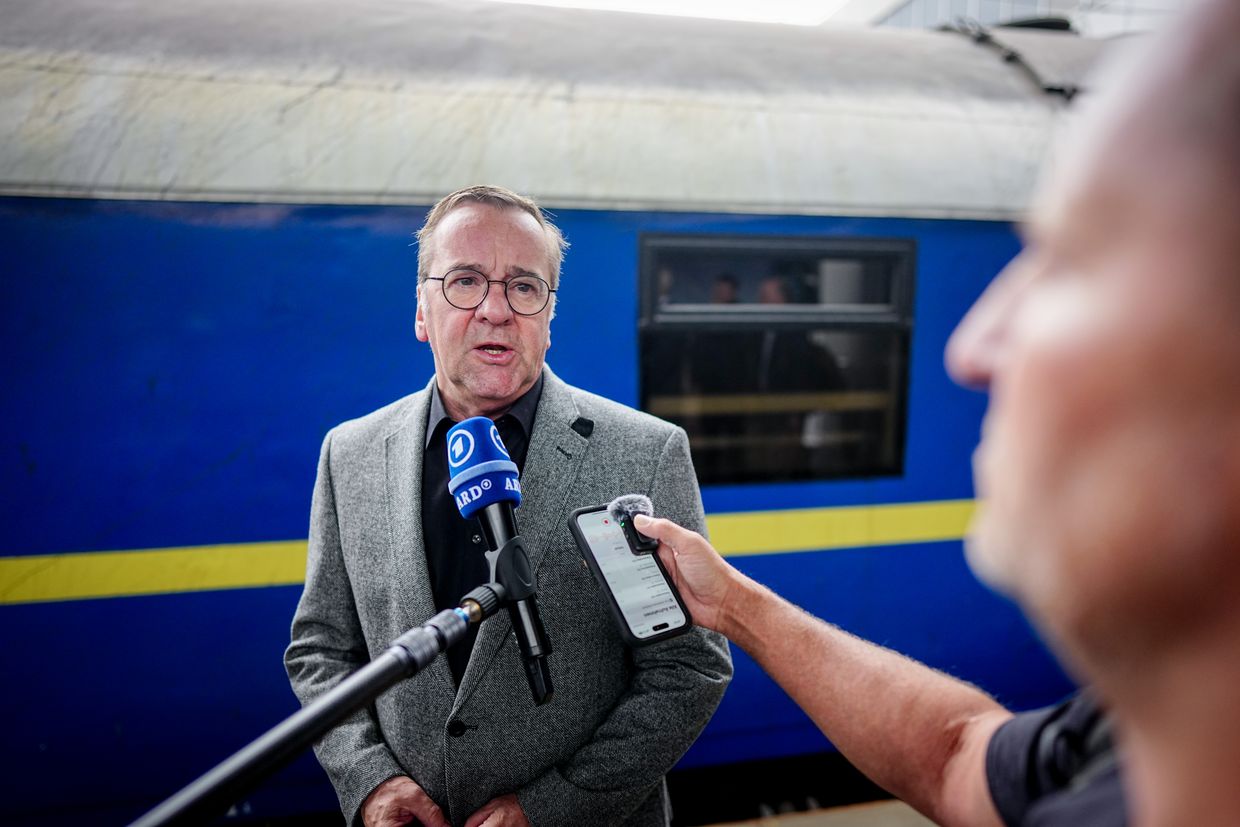
German Defense Minister Boris Pistorius arrived in Kyiv on June 12 to meet Ukrainian leaders and discuss future defense support for Ukraine, DPA news agency reported.
"We are doing everything we can to support Ukraine so that it can defend itself and get into a position where Russia is prepared to enter into serious negotiations," Pistorius said ahead of the departure, according to Reuters.
The visit marks Pistorius's first official trip to Ukraine as a minister in Chancellor Friedrich Merz's new German government.
During former Chancellor Olaf Scholz’s tenure, Defense Minister Pistorius made several visits to the war-torn country and played a key role in establishing Germany as Ukraine’s top European military donor.
Amid President Volodymyr Zelensky's visit to Berlin on May 28, Pistorius and his Ukrainian counterpart, Rustem Umerov, signed an agreement allocating 5 billion euros ($5.76 billion) in military support to Ukraine.
Under the deal, Berlin agreed to help fund the production of long-range drones in Ukraine, tapping into the country's existing industrial capacities and technical expertise.
Berlin also reaffirmed its commitment to supply Ukraine with critical ammunition and weapons. The arms heading Kyiv's way include air defense systems, artillery, land weapons systems, and handguns.
Taurus cruise missiles, a much-coveted long-range weapon capable of striking targets 500 kilometers (300 miles) away, were not announced as part of the package.
Merz has pledged to maintain Germany's steadfast support for Ukraine in the face of Russian aggression. Berlin's role is even more crucial now as the U.S. Trump administration signaled its intent to cut down military assistance for Kyiv.
Since the outbreak of Russia's full-scale invasion in 2022, Germany has provided Ukraine with almost 44 billion euros (around $50 billion) in various forms of support, the German government said.
 The Kyiv IndependentKateryna Hodunova
The Kyiv IndependentKateryna Hodunova
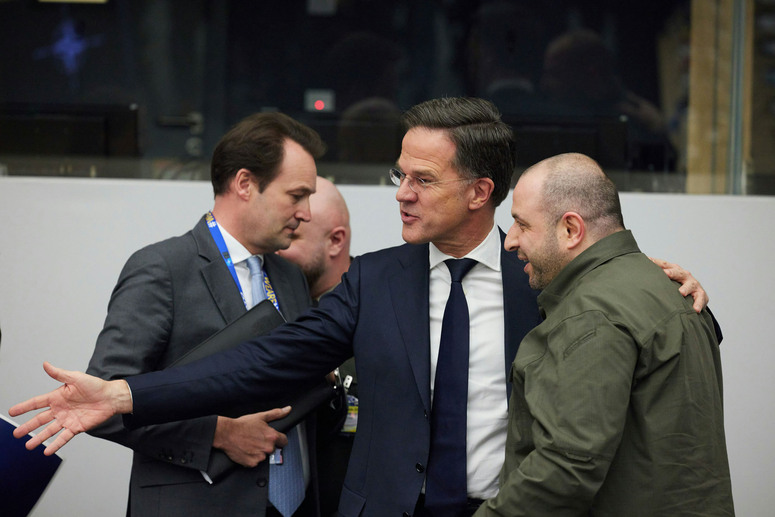
Despite the US’s absence, the Ramstein meeting on 4 June kicked off a new era of military aid for Ukraine, with billions in investments and joint weapons production.
The Ukraine Defense Contact Group convened for the second time this year at NATO headquarters to discuss Ukraine’s defense needs, review plans for the rest of the year, and reaffirm continued support.
For the first time since the group’s creation, the US Secretary of Defense was absent from the meeting.
The Pentagon explained that Pete Hegseth had a tight schedule, writes ArmyInform. He also won’t attend today’s NATO–Ukraine Council meeting, although he did arrive for the NATO ministerial and attended the Alliance’s headquarters on the morning of 5 June.
The US is gradually distancing itself from the Ramstein format, which was launched by the previous Joe Biden administration.
Nevertheless, the meeting results demonstrate that the rest of the allies remain committed to supporting Ukraine militarily, as confirmed by the announcement of new aid packages.
The central takeaway from the Contact Group meeting was the agreement to create a joint defense production mechanism. Ukraine’s Defense Minister Rustem Umerov said the concept came from partners offering to help establish defense production involving Ukrainian companies.
“Our partners are ready to fully finance the production, and the products made under Ukrainian licenses will be sent to Ukraine as long as the war continues,” he explained.
During the discussions, however, the plan evolved into mutual investment: Ukrainian manufacturers will be able to invest in partner countries, while companies from these countries will be able to build large-scale factories in Ukraine.
Umerov noted that the idea is still new, with details under discussion and no official name yet.
“We’re calling it ‘Ramstein investments in the defense industry,’ but this is a strategic breakthrough,” the minister emphasized.
There are already specific agreements on joint production:
The SAAB produces Gripen fighter jets, Raytheon manufactures Patriot missiles, the only type capable of intercepting Russia’s ballistic missiles, KNDS makes missiles for NASAMS, and FFG is notable for supplying military vehicles and equipment, including contributing Leopard 1A5 tanks.
“Ukrainian drones have changed the situation on the battlefield, and now they will change how Ramstein countries prepare for future threats,” Umerov stated.
Before the session even began, London announced a new aid package with a special focus on drones: 100,000 drones for Ukraine’s Defense Forces by the end of 2025, ten times more than last year, with record investments of £350 million.
Additionally, 140,000 artillery shells have already been delivered. Another £247 million will go toward training Ukrainian troops as part of Operation Interflex, which has already trained 55,000 Ukrainian soldiers.
Germany, in turn, confirmed its previously announced €5 billion military aid package. It includes funding for long-range weapons to be produced in Ukraine, as well as the delivery of air defense systems, weapons, and ammunition.
German Defense Minister Boris Pistorius assured that supporting Ukraine remains a priority both for the new German government and for him personally.
Support for Ukraine goes far beyond just two countries. The Netherlands is focusing on maritime security: €400 million will go toward a mine countermeasure ship, boats, and maritime drones for Ukraine.
Norway is prioritizing support for Ukraine’s defense industry, allocating $700 million for drones and contributing $50 million to the NSATU fund.
Canada will provide $45 million for drones, electronic warfare equipment, and will send Coyote and Bison armored vehicles to Ukraine.
Belgium, which hosted Ramstein for the second time, announced a long-term initiative — committing to €1 billion annually in aid to Ukraine through 2029 and the delivery of a mine countermeasure vessel.
Sweden allocated €440 million for international programs to purchase artillery shells, drones, and other weaponry for Ukraine.

Ukraine’s Defense Minister Rustem Umerov and Germany’s Defense Minister Boris Pistorius have signed an agreement on financing long-range weapons of Ukrainian production, according to a press release from the German defense ministry.
“Germany will finance the production of long-range weapons directly on the territory of Ukraine,” the German defense ministry said. The two ministers signed the agreement in Berlin. The ministry added that “this agreement is also a continuation of Germany’s previously announced promise to invest in weapons production in Ukraine.”
The German Defense Ministry said that Ukraine’s defense industry has untapped production capacities and technical potential for manufacturing modern systems.
This agreement was signed as a Ukrainian delegation headed by Ukrainian President Volodymyr Zelenskyy arrived in Berlin on 28 May. Zelenskyy held a meeting with German Chancellor Friedrich Merz to reportedly discuss Ukraine’s capability to respond symmetrically to Russian strikes. The discussion focused specifically on weapons production, including long-range weapons.
“It is important that we work together to bring peace closer and give our people more security. And it is important that we try to be as effective as possible in this,” Zelenskyy wrote on social media after the meeting.
At a press conference on 28 May, German opposition leader Friedrich Merz announced the expansion of military aid to Ukraine.
German Defense Minister Boris Pistorius and his Ukrainian counterpart Rustem Umerov signed an agreement regarding the provision of ammunition packages for various weapon systems. Ammunition for important air defense systems, land weapon systems, and small arms will be delivered soon. The support measures for Ukrainian armed forces have a total scope of around 5 billion euros ($5.7 billion). The money comes from funds already approved by the Bundestag, according to the ministry.
The agreement also includes German financing for the production of long-range weapon systems in Ukraine. Merz also confirmed that there would be no restrictions for Ukraine regarding the use of long-range weapons against Russia.
The agreement represents a shift toward direct investment in Ukrainian weapons manufacturing rather than just weapons transfers. Germany’s commitment extends beyond immediate military aid to building Ukraine’s long-term defense capabilities.
These German cruise missiles can strike targets at distances of 500 kilometers. Before becoming chancellor, Merz signaled he would overturn his predecessor Olaf Scholz’s ban on delivering the missiles to Ukraine.
Kyiv has called for a long time upon Germany to provide the weapons to strike targets deep inside Russian territory. Scholz had ruled out the move due to escalation fears. Merz has not yet approved the deliveries. The Taurus missile policy has become a point of contention between the CDU/CSU and their Social Democratic coalition partners.
The German chancellor declared earlier this week that Berlin and other Western partners have lifted all range restrictions on arms provided to Ukraine. Some viewed this as a signal of an incoming policy change on Taurus missiles.
On 26 May, Merz said that weapons supplied by Germany to Ukraine no longer face range restrictions for use against Russian territory. He clarified that the US, Britain, France and Germany lifted restrictions on Ukraine’s long-range strikes against Russia several months ago.
German Vice Chancellor Lars Klingbeil responded that the government coalition had made no new agreements about changing course on lifting restrictions for Ukraine’s long-range strikes on Russian territory.
Taurus missiles represent the only long-range German weapons Ukraine has requested from Germany. Ukraine previously received long-range missiles from the US, UK, and France. These included ATACMS, Storm Shadow, and SCALP missiles. Ukraine was initially permitted to deploy them only against Russian military forces in occupied Ukrainian territories.